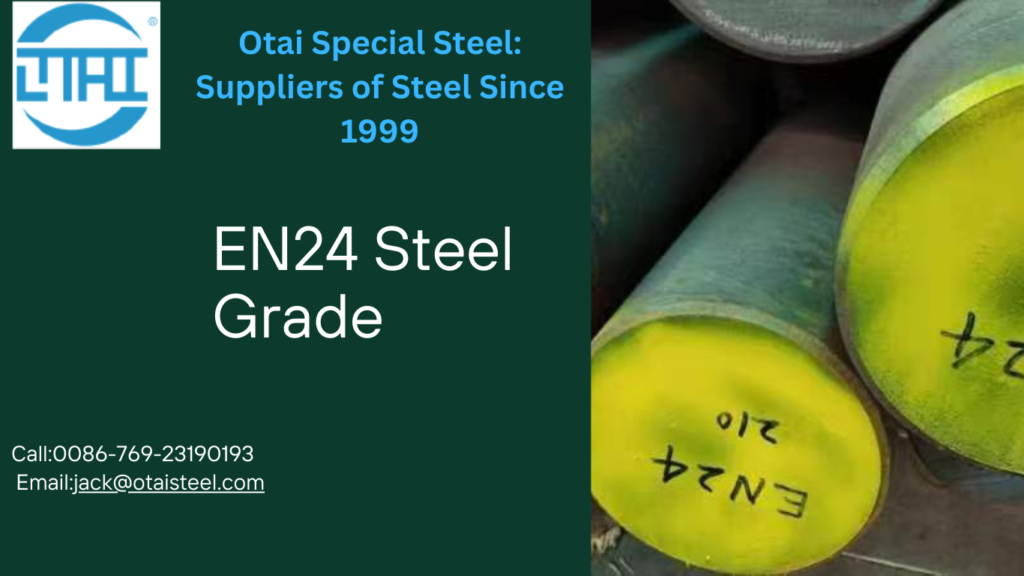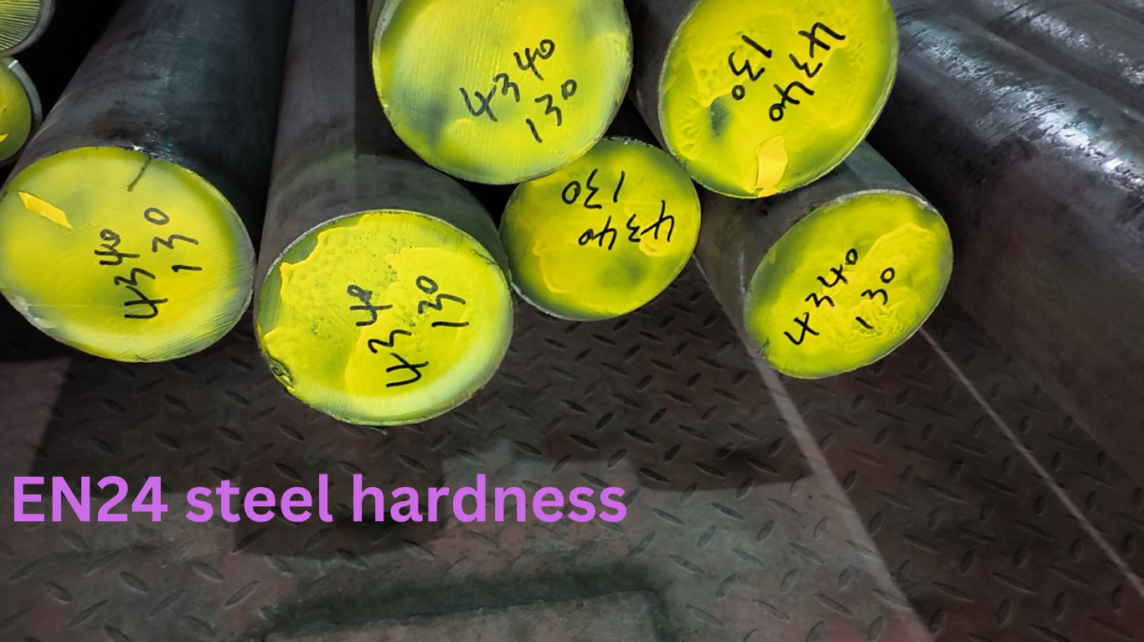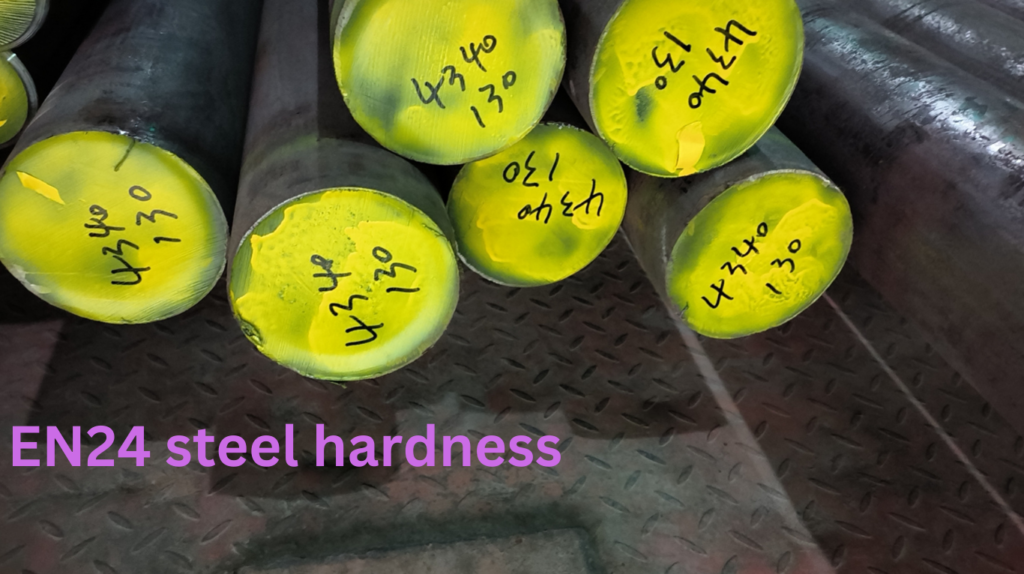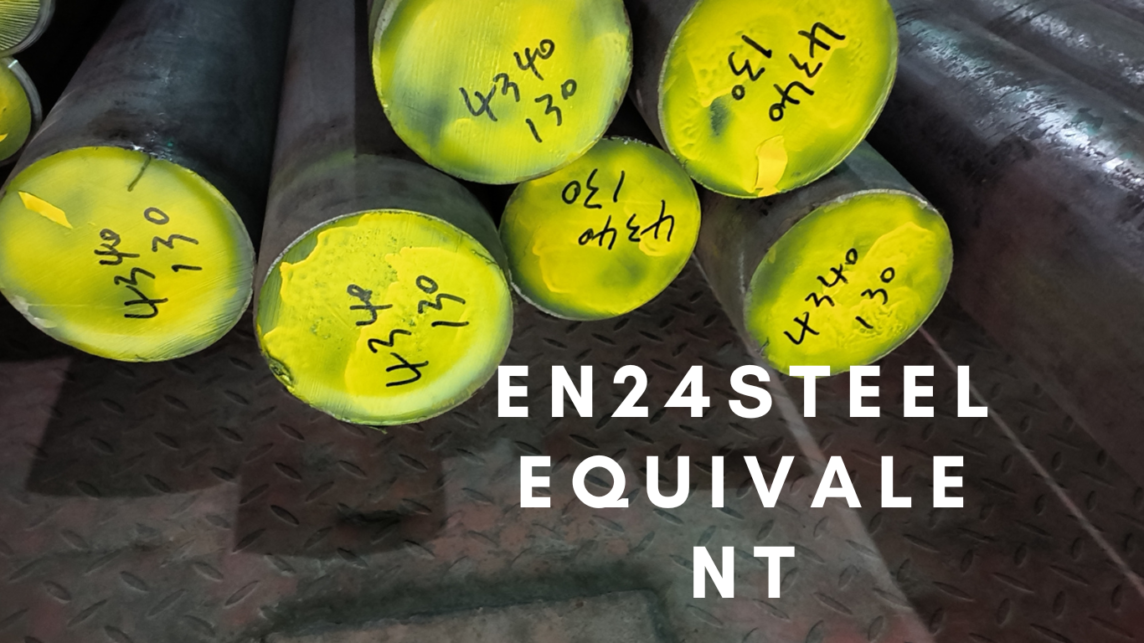Greetings, steel aficionados, and industry professionals! If you’ve found your way here, you’re undoubtedly in search of information about EN24 steel grade or its synonyms, such as “EN24 steel alloy.” You’re in good hands, as we delve into the world of EN24 steel, exploring its chemical composition, mechanical properties, applications, and the many reasons why it’s a go-to choice in various industries.
 What is EN24 Steel?
What is EN24 Steel?
EN24 steel, also known as EN24T or 817M40, is a high-strength alloy steel celebrated for its exceptional mechanical properties. Think of it as the heavyweight champion in the steel realm, equipped with the perfect blend of elements to ensure superior strength, toughness, and durability.
The Chemistry Behind EN24 Steel
Let’s start with the ingredients. EN24 steel is primarily composed of carbon, chromium, nickel, and molybdenum. These elements are like a symphony, each playing a unique role in the steel’s composition. Carbon provides strength, while chromium and nickel enhance corrosion resistance. Molybdenum, the unsung hero, contributes to toughness and hardenability. It’s a harmonious blend that ensures this steel stands up to even the toughest challenges.
| Alloying Element | EN24 Steel (%) |
|---|---|
| Carbon (C) | 0.35-0.45 |
| Manganese (Mn) | 0.45-0.70 |
| Nickel (Ni) | 1.30-1.80 |
| Chromium (Cr) | 1.40-1.70 |
| Molybdenum (Mo) | 0.20-0.35 |
Mechanical Properties: The Steel’s Superpowers
EN24 steel’s mechanical properties are the stuff of legends. With high tensile strength, impressive yield strength, excellent hardness, and toughness, it’s akin to a superhero that can tackle any mission. Need a robust component for a heavy-duty application? EN24 steel is the answer.
Applications
EN24 steel isn’t just a tough nut; it’s also incredibly versatile. You’ll encounter it in the aerospace industry, where precision and durability are paramount. In the automotive world, it’s a star player, ensuring the safety and performance of vehicles. The construction and engineering sectors rely on EN24 steel to build structures that can weather the test of time. It’s the steel you turn to when you need to trust that your project will endure.
The Birth of EN24 Steel
Wondering how EN24 steel is forged? The manufacturing process is like crafting a masterpiece. Meticulous attention to detail, precise blending of elements, and a series of heat treatments are applied to create the final product. It’s like baking a perfect cake, where precision is key.
The Quest for Perfection
While EN24 steel is undoubtedly a remarkable material, it’s not without its limitations. Its incredible strength can sometimes translate to added weight, making it less suitable for lightweight applications. However, for projects where strength is paramount, EN24 steel remains a top choice.
EN24 Steel vs. the Competition: A Showdown
Comparing EN24 steel to other steel grades is like a clash of titans. It outperforms mild steel in terms of strength and toughness, giving it the upper hand in demanding applications. When you need a material that can stand up to the most challenging tasks, EN24 steel often emerges as the victor.
Caring for Your EN24 Steel
Just like any superhero, EN24 Steel needs proper care. Regular maintenance, protection from corrosion, and responsible handling are essential to ensure it continues to perform at its best. Remember, even superheroes need a helping hand now and then.
The Future of EN24 Steel
As we explore the ever-evolving world of materials, we can’t help but wonder what the future holds for EN24 steel. Researchers are continually pushing the boundaries of steel science, and who knows what advancements are on the horizon? Perhaps EN24 steel will become even stronger or find new applications we haven’t even dreamed of yet.
In conclusion, EN24 steel grade and its synonyms are true superheroes in the steel world, offering unparalleled strength, toughness, and versatility. Whether you’re in aerospace, automotive, construction, or any other industry requiring exceptional materials, EN24 Steel stands ready to deliver. As we march forward in the realm of materials, EN24 steel remains a beacon of possibility in the world of steel alloys. So, next time you see EN24 steel in action, remember, that it’s not just any steel—it’s a material with the power to shape the future.


 Decoding EN24 Steel Hardness
Decoding EN24 Steel Hardness
